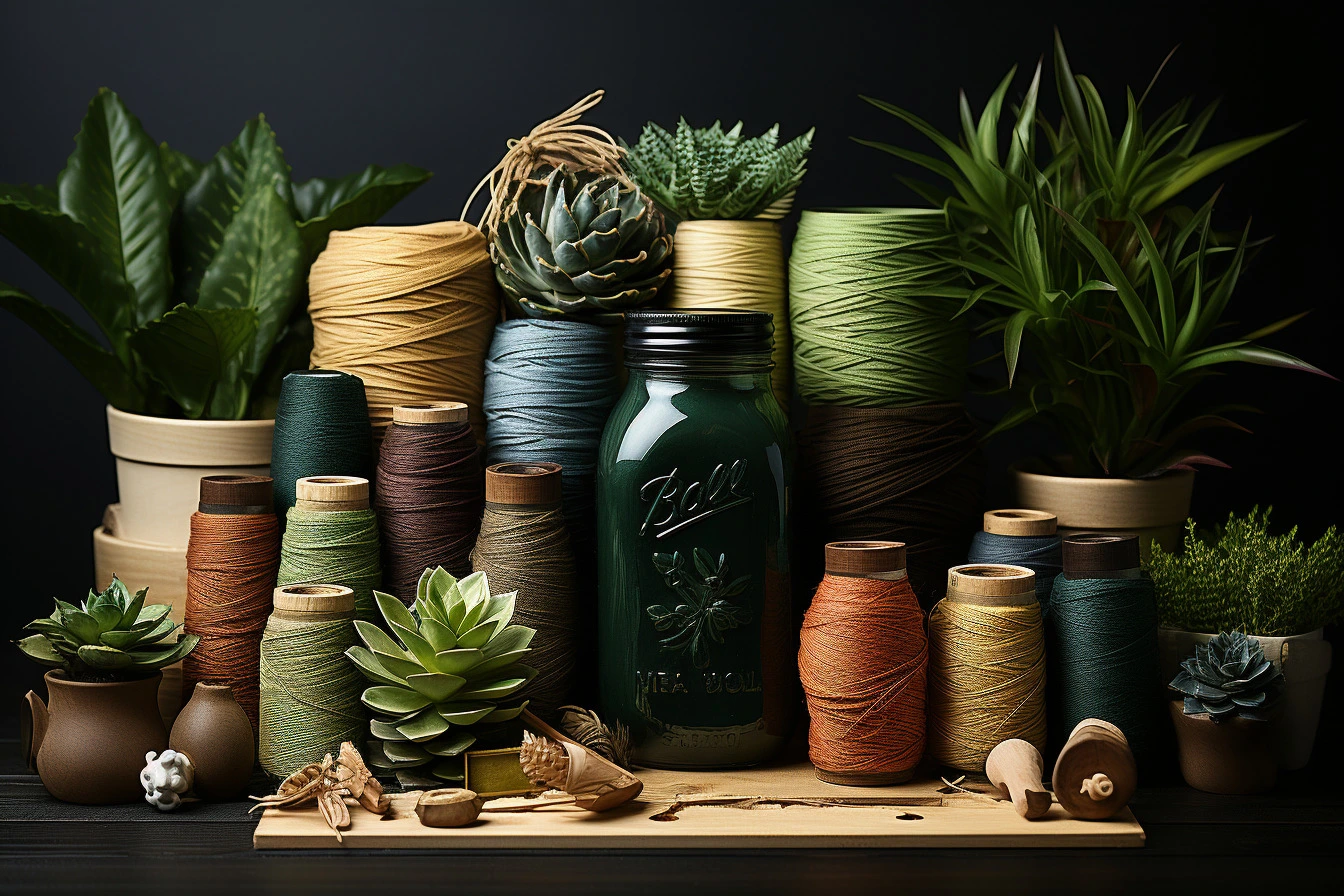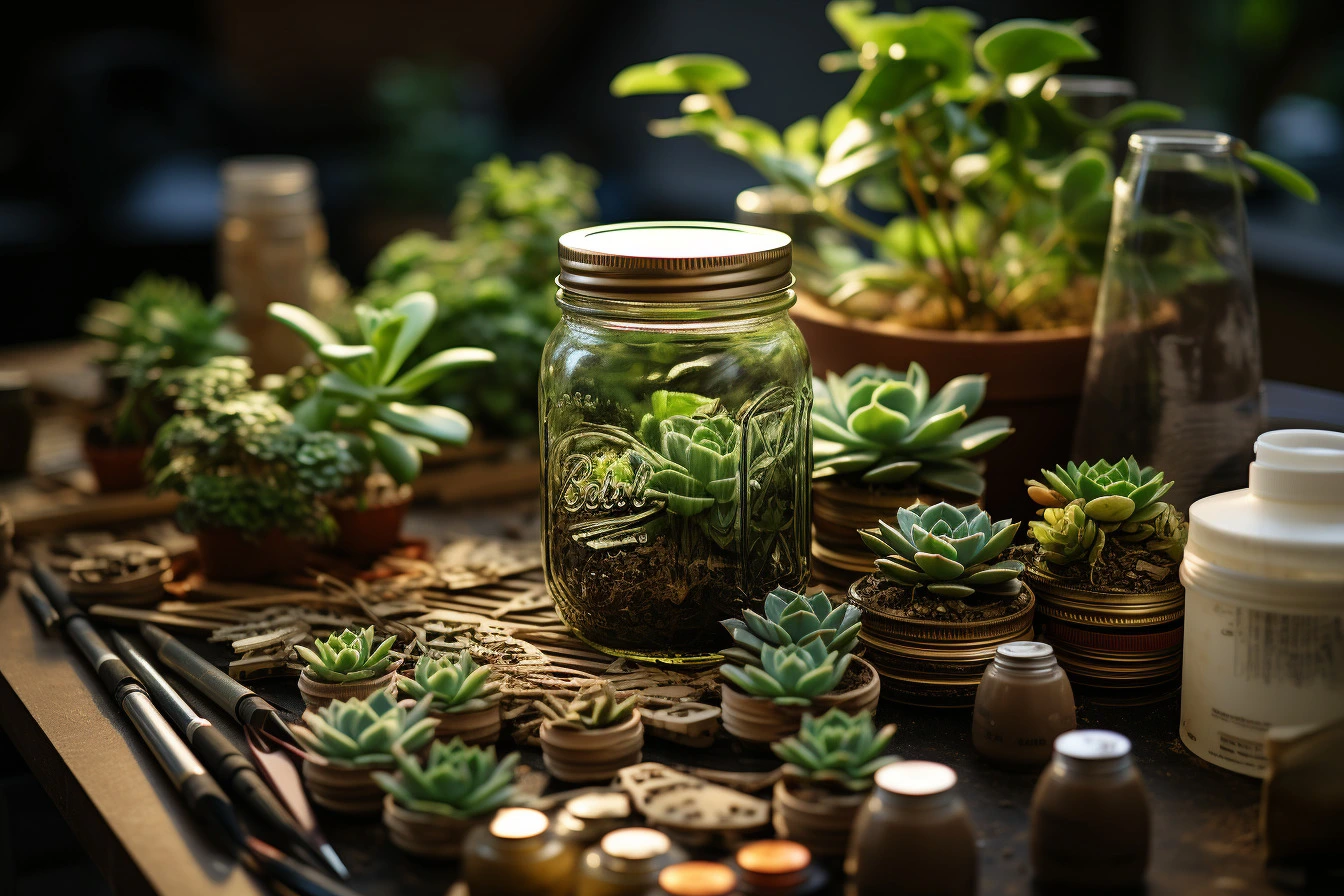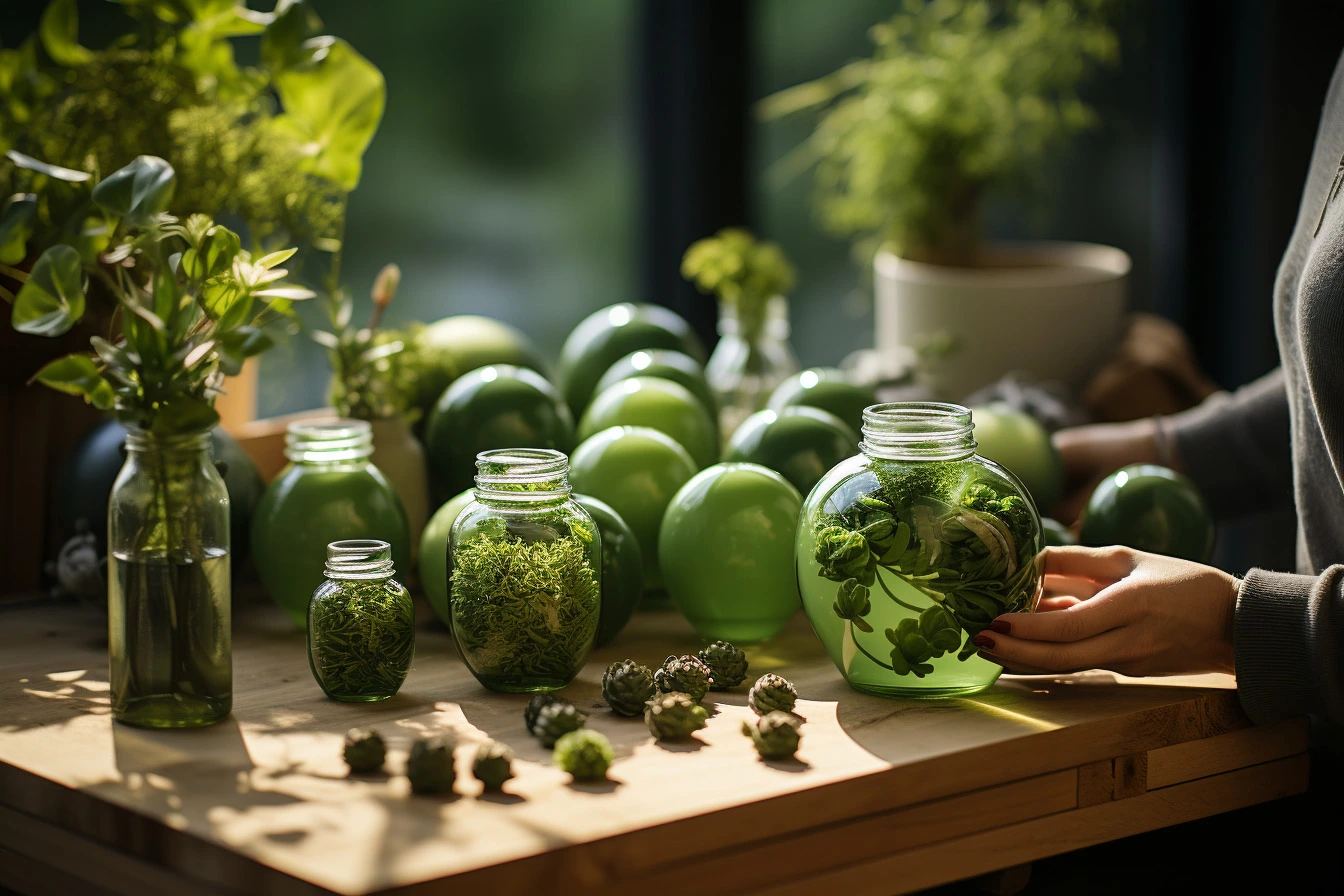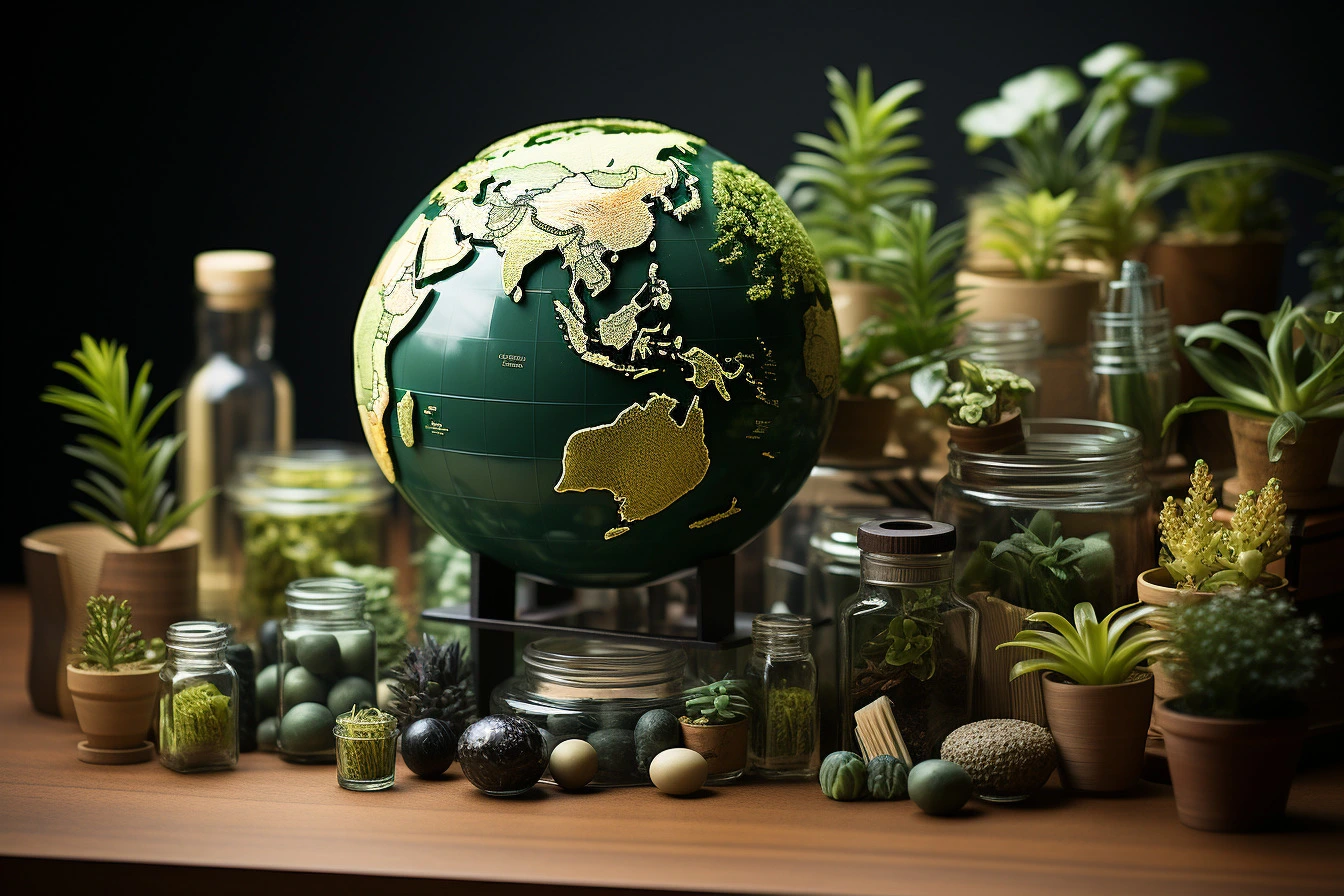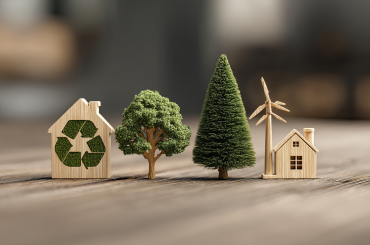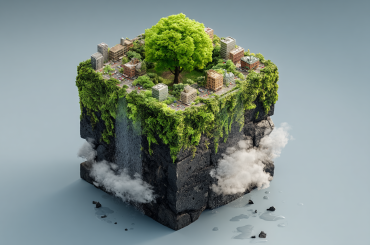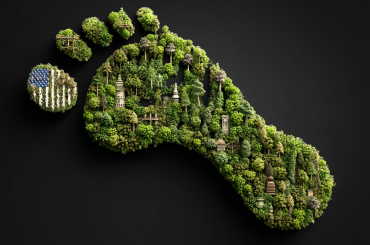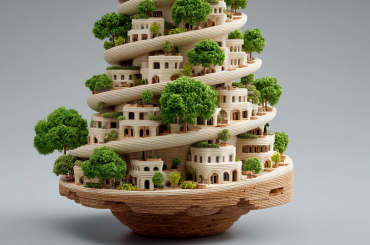My fingers were moving across the array of fabrics, threads, and beads scattered across my workspace when it hit me—was my beloved crafting hobby actually harming the planet? I’d been sitting there, completely absorbed in planning my next sustainable DIY project, when I glanced at my overflowing craft drawer. Plastic bits, synthetic ribbons, half-empty glue bottles… the evidence was right there in front of me.
That moment changed everything about how I approach eco-friendly crafts. I mean, here I was, someone who’d spent years writing about sustainability, and I hadn’t properly examined my own creative practices! It was one of those wake-up calls that makes you laugh at yourself while simultaneously inspiring you to do better. The irony wasn’t lost on me that my passion for making beautiful things might be contributing to environmental problems.
But here’s the thing about those lightbulb moments—they’re not just about recognizing the problem, they’re about discovering incredible opportunities. As I dove deeper into sustainable crafting materials and eco-friendly craft ideas, I realized this wasn’t going to be about giving up creativity. Quite the opposite, actually. It opened up a whole new world of sustainable craft projects that were not only environmentally responsible but often more interesting and meaningful than anything I’d made before.
The transition to sustainable crafts started small. I remember my first attempt at making eco-friendly craft supplies work for a project I’d been planning. Instead of buying new materials, I spent an afternoon rummaging through charity shops and my own forgotten storage boxes. That’s when I found it—an old wooden ladder that someone had thrown out, presumably because it was too wobbly for actual ladder duties. Most people would’ve seen rubbish, but I saw potential for one of my favorite eco-friendly diy projects ever.
With some sanding, plant-based wood treatment (because obviously I wasn’t going to use toxic chemicals after my sustainability revelation), and a bit of creative engineering, that discarded ladder became the most gorgeous bookshelf in my living room. It’s currently holding everything from my collection of environmental science books to several thriving plants, and every time I look at it, I’m reminded of the magic that happens when you combine creativity with environmental consciousness.
But let’s talk about sustainable crafting materials properly, because this is where the real adventure begins. When you first start exploring eco-friendly craft materials, it can feel overwhelming—there’s so much conflicting information out there about what’s truly sustainable. I spent weeks researching everything from organic cotton threads to plant-based adhesives, trying to understand which options would actually make a difference.
Natural fibers became my new obsession. Cotton, wool, hemp—each one brought its own personality to my projects. Hemp was a revelation, honestly. I’d always associated it with scratchy, uncomfortable textures, but modern hemp yarn is incredibly soft and surprisingly strong. I used it to create a tote bag that I still use for grocery shopping three years later, and it looks practically brand new despite constant use. That’s the thing about sustainable craft supplies—they’re often more durable than their synthetic counterparts.
The journey into sustainable diy projects taught me that waste materials can be absolute goldmines for creativity. I started looking at everything differently. Empty glass jars became candle holders with some simple etching techniques. Old t-shirts turned into the softest fabric strips for weaving projects. Even broken jewelry found new life as decorative elements in mixed-media art pieces. Creating an eco-friendly workplace taught me similar lessons about seeing potential in overlooked resources.
One of my favorite sustainable diy crafts came from a collaboration with my neighbor Sarah, who was renovating her kitchen. She was about to throw away these beautiful ceramic tiles that had a tiny chip in one corner—nothing that affected their structural integrity, just a cosmetic issue. Instead, we spent a weekend breaking them into mosaic pieces and creating the most stunning garden stepping stones. The process was surprisingly therapeutic, and the end result transformed her garden path into something that looks like it belongs in a Mediterranean villa.
But here’s what really surprised me about eco-friendly crafting—the community aspect. Once I started sharing my sustainable craft ideas online and at local markets, I discovered this incredible network of like-minded creators. There’s something special about connecting with people who understand that making beautiful things doesn’t have to come at the planet’s expense. Last summer, I organized a craft swap where everyone brought materials they weren’t using anymore. The power of community gardens has taught me similar lessons about collective action.
The variety of materials that people brought was incredible—rolls of reclaimed wallpaper, buttons cut from old clothes, fabric scraps from sewing projects, even interesting pieces of driftwood that someone had collected but never used. By the end of the afternoon, everyone had gone home with inspiration for new projects, and we’d prevented bags worth of materials from ending up in landfill. These events have become regular occurrences in our community, and they’ve completely changed how I think about resource sharing.
Eco-friendly craft supplies don’t have to break the bank, either. Some of my most successful sustainable crafts have used materials that cost practically nothing. Those sea glass pieces I mentioned earlier? Free, collected during beach walks that were good for my mental health anyway. The bamboo yarn I use for scarves comes from a small supplier who sources it ethically and sells it at prices comparable to conventional alternatives. Sustainable fashion and ethical fabrics shares similar principles about making conscious material choices.
When I started turning my eco-friendly craft ideas into a small business, I was nervous about whether people would actually want to buy handmade, sustainable items. Would customers understand the value proposition? Would they be willing to pay slightly more for products that were genuinely environmentally friendly? The answer, thankfully, has been a resounding yes. People are increasingly looking for ways to align their purchases with their values, and sustainable crafts provide that opportunity.
The business side taught me new lessons about sustainable diy products. Scaling up production while maintaining environmental standards requires careful planning. I had to research suppliers for eco-friendly craft materials in larger quantities, figure out plastic-free packaging solutions, and find ways to explain the environmental benefits without getting preachy. Zero-waste living tips helped me understand packaging alternatives.
One of my best-selling items turned out to be candle holders made from reclaimed wine bottles. The process involves carefully cutting the bottles using a string soaking technique—no power tools required, just patience and practice. Each one is unique because of the natural variations in glass color and thickness. Customers love the story behind each piece, knowing that it prevented waste while creating something beautiful for their home.
What I’ve learned through this journey is that sustainable crafts aren’t just about using different materials—they’re about developing a completely different relationship with stuff. When you start seeing potential in things that others might discard, when you begin to value durability and story over convenience and newness, your entire worldview shifts. The intersection of minimalism and sustainability explores similar themes about conscious consumption.
The environmental impact of our creative hobbies might seem small in the grand scheme of things, but collective action creates real change. Every time someone chooses to make their own eco-friendly craft supplies instead of buying plastic alternatives, every time someone upcycles furniture instead of throwing it away, every time someone shares materials instead of buying new—these actions ripple outward.
My craft room looks completely different now than it did five years ago. Instead of plastic storage containers, I use glass jars and wooden boxes. Instead of synthetic materials, my supplies consist mainly of natural fibers, reclaimed materials, and non-toxic adhesives. Instead of impulse purchases from big craft stores, I plan projects around materials I already have or can source sustainably. The space feels more intentional, more connected to my values, and somehow more inspiring because every material has a story.
The most rewarding part of this transformation has been watching others discover their own passion for sustainable crafting. When I teach workshops on eco-friendly craft projects, I see the same lightbulb moment I experienced years ago. People realize they don’t have to choose between creativity and environmental responsibility—they can enhance both simultaneously.
So here’s my invitation to you: start small, but start somewhere. Maybe it’s trying one sustainable diy project using materials you already have. Maybe it’s researching eco-friendly alternatives to supplies you regularly use. Maybe it’s connecting with local crafters who share similar values. Whatever your entry point, remember that sustainable crafts aren’t about perfection—they’re about intention, creativity, and the quiet satisfaction that comes from making beautiful things while treading lightly on this planet we all share.
